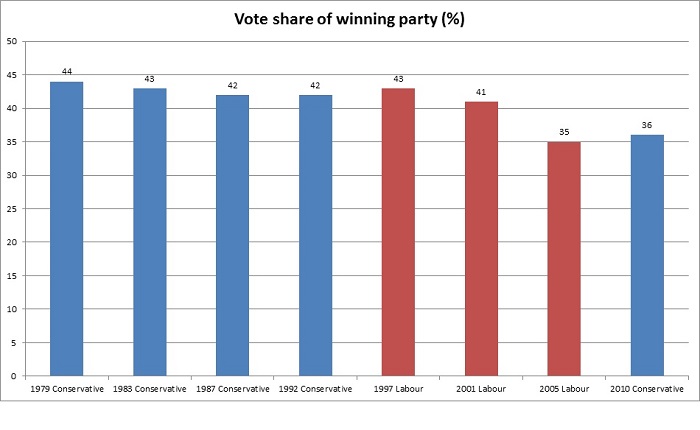Six months from today, on Thursday 7 May, the British people will choose their next government at the 2015 General Election.
The Labour Party remains narrowly ahead in most opinion polls averaging around 33 per cent of the vote compared to the Conservatives’ 32 per cent. Support for Labour’s approach to the key social policy area of the National Health Service is making its politicians relatively optimistic that they will emerge as the largest party in a new administration. Little wonder then that during his recent annual conference speech, the Labour leader, Ed Miliband, pledged to recruit around 36,000 new health care workers if he becomes Prime Minister.
Meanwhile, Labour can also draw strength from the political difficulties being experienced by the Conservatives as a consequence of the rise of the Euro-sceptic UK Independence Party (UKIP). While European integration tends not to feature too highly on British voters’ priorities, a related area has emerged as a central election issue – immigration. Buoyed by winning the 2014 European Parliament elections in the spring, as well as its first parliamentary seat at Westminster in the Clacton by-election, UKIP is now hoping to build on its representation at the General Election. Informed estimates point to the party winning between five and 15 MPs mostly in Conservative held constituencies.
However, the economy remains a policy area that provides the Conservatives with better news – all the main surveys show that British voters regard their fiscal plans as being substantially more credible than Labour’s, whose recent emphasis on the cost of living does not seem to have made much impact on public opinion. Away from monetary and financial matters, there lies another potential explanation for why Labour politicians are not feeling more relaxed about their aggregate poll lead - Ed Miliband’s personal approval ratings have been consistently bad and are presently at their lowest point ever according to YouGov. Moreover, it is generally acknowledged that many of the large commercial polling companies have frequently underestimated support for the Conservatives in the past due to errors related to sampling.

Attempts are already being made to model constituency results in order to predict the outcome of the 2015 election. Approximately 450 out of the 650 seats (around 70 per cent) can be considered ‘safe’ – that is to say they tend not change parties at elections – meaning that experts can focus on the areas that party campaigners themselves target to understand what is likely to happen. Applying opinion polling to these constituencies, and adding in a bit of local knowledge about the candidates, it is difficult not to conclude that a hung parliament is still looking the most likely result. Nevertheless, it might also be noted that with Tony Blair as leader, Labour won the 2005 General Election outright with just over 35 per cent of the vote so there is still hope for both main parties that they can edge ahead in the coming months.
What do you think? Share your comments with us below.
Dr Martin Steven teaches on our BA Politics programme.
- Image © Basphoto | Dreamstime.com - UK Ballot Papers Photo
Disclaimer
The opinions expressed by our bloggers and those providing comments are personal, and may not necessarily reflect the opinions of Lancaster University. Responsibility for the accuracy of any of the information contained within blog posts belongs to the blogger.


.jpg)